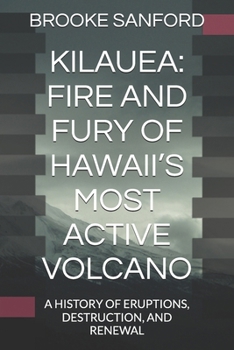Kilauea: Fire and Fury of Hawaii's Most Active Volcano: A History of Eruptions, Destruction, and Renewal
Kilauea Volcano, located in Hawaii Volcanoes National Park on the Big Island of Hawaii, is one of the most active and iconic volcanoes in the world. It has been erupting continuously since 1983, making it one of the longest-erupting volcanoes on record. Kilauea is a shield volcano, characterized by its gently sloping shape resembling a warrior's shield. It stands approximately 4,091 feet (1,247 meters) above sea level and is part of the Hawaii-Emperor seamount chain. The volcano's summit is marked by a caldera, a large depression formed by past volcanic activity. Kilauea's ongoing eruption has been characterized by the continuous flow of lava from its East Rift Zone. The volcano has produced a wide range of eruption styles, including slow-moving lava flows, explosive events, and the emission of volcanic gases. Its most recent eruption, which began in 2018, has been marked by the destruction of hundreds of homes and the displacement of thousands of people. Kilauea Volcano is not only a geological wonder but also an ecosystem that supports a diverse range of flora and fauna. The volcano's unique landscape has created a variety of habitats, including tropical rainforests, lava deserts, and volcanic ash deposits. These habitats support a wide range of plant and animal species, many of which are found nowhere else on Earth. Kilauea Volcano holds great cultural and spiritual significance for the indigenous people of Hawaii. In Hawaiian mythology, the volcano is believed to be the home of Pele, the goddess of fire and volcanoes. The volcano's ongoing eruption is seen as a manifestation of Pele's power and a reminder of the importance of respecting and caring for the natural world.
Format:Paperback
Language:English
ISBN:B0DX5K12K1
ISBN13:9798310640856
Release Date:February 2025
Publisher:Independently Published
Length:86 Pages
Weight:0.28 lbs.
Dimensions:0.2" x 6.0" x 9.0"
Related Subjects
NatureCustomer Reviews
0 rating





